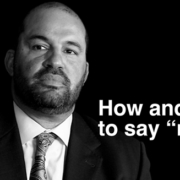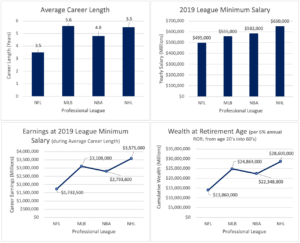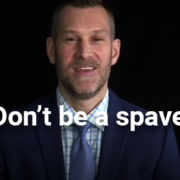Announcing Verdence/PRO
Education, empowerment & transparency are the pillars of the Verdence/PRO approach
Service offerings go far beyond investment management to include life skills education, career path analysis, private investment screening, philanthropic strategies and more.
PRESS RELEASE
BALTIMORE, MD – March 2, 2020 – Verdence Capital Advisors (“Verdence”), a nationally-recognized private wealth advisory and multi-family office firm, today announced a brand name for its longstanding specialist division focused on the unique needs of professional athletes and entertainers: Verdence/PRO.
Led by Rich Rosa, Managing Director and Partner, and Noel LaMontagne, Director and former NFL football player, the Verdence/PRO team is a highly qualified group that has vast experience helping professional athletes and entertainers manage their financial challenges and life complexities. Backed by the larger Verdence organization, which currently has more than $2.5 billion in assets under advisement, Verdence/PRO is able to provide industry-leading services, highly customized plans and solutions, and completely unbiased advice.
“I am very excited about the launch of Verdence/PRO. Under the larger Verdence umbrella, we’ve been serving the needs of the elite athlete and entertainment community and have developed a level of specialization that sets us apart from other firms, which all too often want to put these clients, who have unique stories and come from wildly different backgrounds, into one-size-fits-all approaches,” said Rosa, himself a former NCAA football player who spent more than two decades as a player representative before joining Verdence. “Our clients need a partner, a coach, and a confidant, not a salesperson.”
The philosophy underpinning Verdence/PRO is built around three pillars:
- Education: All clients must be provided with the tools to make fact-based decisions about their futures;
- Empowerment: The Verdence/PRO team sits beside clients, not across from them, and provides the confidence needed to get clients wherever they want to go; and
- Transparency: No self-serving agendas, complete transparency on compensation, and a commitment to work only in the client’s best interests.
“Our three pillars are the simple but powerful principles that guide everything we do on behalf of clients,” added LaMontagne. “It is an exciting day for Verdence Capital Advisors and for the elite athletes and entertainers we advise. Providing access to this package of services and the depth of knowledge that Verdence/PRO offers is truly unmatched in the space.”
As part of the launch of Verdence/PRO, the firm has built a new website that functions as a hub of educational content and insights geared toward the unique challenges that athletes and entertainers must face. “How and when to say no,” “Career transition planning,” and “Are you renting a lifestyle?” are just a few of the videos and posts currently available, with more set to be added on an ongoing basis.
“Athletes and entertainers need and deserve access to the best of the best when it comes to managing their finances and planning for their future, and that’s exactly what we offer,” added Leo Kelly, CEO and Founder of Verdence Capital Advisors. “The power of Verdence/PRO is built on all that Verdence Capital Advisors has long offered to its clients, giving sports and entertainment clients access to the same experts and the same resources we bring to bear for ultra-high-net-worth business owners and entrepreneurs.”
The Verdence/PRO team offers a wealth of experience and a robust range of service offerings, including investment management and financial counseling to highly tailored budget and cash flow design, long-term in-depth financial planning, career path analysis, life skills and economic education, private investment screening, philanthropic strategies, and more.
“The career path and the earnings cycle of an athlete or entertainer are very different from a business owner or high net worth executive, but public figures are still business owners: the owners of their own personal brand,” added Rosa. “In their financial lives, they face hard choices, unlike any they might encounter on the course, field, studio, or stage. We want to empower our clients through endless education and support, so together, we can help them make the best decisions for themselves and their families.”
For more information, please visit www.verdencepro.com
# # #
About Verdence Capital Advisors
Verdence Capital Advisors is a nationally-recognized private wealth advisory and multi-family office firm headquartered in Hunt Valley, Maryland, with an office in Northern Virginia. Committed to the principle that advice should be transparent, customized and given without bias, true independence is one of the guiding principles of Verdence Capital Advisors.
For more information, visit: www.verdence.com
Media Contact:
Chris Sullivan
MacMillan Communications
(212) 473-4442
chris@macmillancom.com
Career Transition Planning: Embrace it!
The Transition Game: What’s Next is Coming. Don’t Fear It, Embrace It
All genres of entertainment feature incredibly talented individuals, who’ve spent countless hours training and rehearsing to get the job that launches their career. Their initiative and drive to continually make the impossible look effortless is one of the reasons why we watch these people on television or the big stage to begin with, but when the magic begins to wane, and their armor of consistent success rusts and cracks, a moment arrives when they must get out of their comfort zone and see what lies beyond the velvet rope. Almost every entertainer or professional athlete will face job transitions as they work through their individual careers, and at some point, many will face a career shift outside entertainment altogether.
The average participation age range for major professional sports leagues (NFL, NBA, MLB, NHL), falls in the mid to late 20’s, per data from The Elias Sports Bureau. However, due to advances in medicine, nutrition, and how athletes take care of their bodies, the ability to participate at high levels at older ages seems to be increasing in all sports. Regardless of their age, the participation clock in athletics ticks faster than most other professions, and sooner rather than later, the game will finally end for everyone.
The same is true for the performing arts world. While the industry provides different age ranges, on average most people in the industry fall in the mid-to-late 30’s for actors and into the 40’s and 50’s for writers, directors, and other off-camera staff. Still, as in sports, the lights go down on many in the space much faster than hoped.
Unsurprisingly, entertainment ranks among the most competitive career paths on the planet, and the number of willing applications vastly outweighs the extremely limited number of jobs. For athletes, the turnover rate runs high due to injuries, younger or more talented prospects, and diminishing skills over time. And similarly, performers experience inconsistency of successful projects, endless competition for jobs causing oversaturation, and high failure rates that can lead to moving into more traditionally stable professions. The realities surrounding age, working lifespan, and competition in these careers paint a clear picture that athletes and performers need to expect, prepare for, and embrace change.
Entertainment careers grow from hours of hard work and a limitless passion for staying ahead of the industry. This same mentality that drives someone toward success in entertainment will also help them be successful as they transition out of it. Specifically, a successful career transition comes from the ability to apply good habits toward whatever path or challenge lies ahead of you. The work ethic, attitude, and energy that helped create a person’s first dream career will help them usher in and realize the next one. Career transitions should be regarded more as transformations or evolutions, providing a unique way for entertainers to reapply the intense effort that made them successful in the first place.
Rain or Shine
Life can throw you curveballs. While you can’t control when and how unexpected circumstances arise, you can prepare a financial buffer — an emergency “Rainy-Day” fund in advance.
But, you already knew this, right? So how do you DO it?
There are several ways to establish a “Rainy-Day” fund. The easiest is to make regular, automated deposits to an untouchable savings account. You can also get creative. Challenge yourself to save more. For example:
- Each time you fill up your gas tank, put that same amount into your Rainy-Day account. At the end of a year, not only will you have saved money, you’ll know how much you spent on gas.
- Do the same with Starbucks…or Baskin-Robbins…or your favorite pub.
- Every January, take a close look at all your bills. Call it a line review. You may be surprised by how many ways you can find to trim regular expenses. Call your cable company to negotiate a better rate. Shop cell phone carriers. Go through your credit card statements. Many families have subscriptions to services they either haven’t used in a long time or forgot they had. Remember that “free trial” membership you signed up for? The one you forgot to cancel? (Fun Fact: According to Quora, 48% of people who sign up for a free trial forget to cancel before they’re charged with auto-renewal)
The bottom line: It’s ideal to have approximately 12 month’s worth of savings stashed in extremely safe and liquid investments in case of emergency. Then don’t touch it. Rather, adjust the amount yearly based on things like cost of living and inflation.
Think of it as a gift. To your future self.
How and When to Say “No”
Estate Planning: Are you ready?
A Better Understanding of the Complexities of Wills and Estate Planning
Discussing the subject of what happens after we are gone is rarely easy. But once we are gone, the discussion becomes impossible. So, however we want to help our families and loved ones, as it pertains to their lives after our deaths, is something that we all need to prepare for in advance.
According to a recent study by LexisNexis*, around 55% of American adults have not completed a will or estate plan. The study cites that this percentage has stayed relatively constant throughout the 21st century. Additionally, it shows that the percentage increases dramatically for minorities during the same time period. Generally, older adults at or near retirement age have been shown to be more likely to have a will or an estate plan in place to some degree.
A horrific and very public example of how big of a mistake it can be to not plan your will and estate is the death of entertainer Prince in 2016. With his assets valued at over $300 million, he had nothing in place to protect his wealth, and this left everything to be dispersed by the State of Minnesota. A state-appointed judge is now solely responsible to decide what will be left and how it will be distributed to his surviving family. Due to the total lack of a will or any planning, some individuals have even laid claims to his estate through various alleged connections to him. This confusion has led to additional court proceedings and has delayed their attempts to verify his true next of kin.
There can be a lot of confusion surrounding what a comprehensive will and estate plan entails and how to know that you have completed everything you need. Since many of our sports and entertainment clients tend to be younger, thinking about death and its ramifications is easy to put on the back burner. However, being young and earning significant amounts of money ahead of your peer group means that you must accelerate your financial education so you can think long term. Youth is not a valid excuse to escape the responsibility that comes with protecting your wealth.
For example, when former NFL quarterback Steve McNair was tragically killed at the age of 36 in 2009, he had no will in place. His children were all very young, and with his estate valued at approximately $20 million, there was no plan in place to provide for anyone after he passed. The State of Tennessee was left to sift through everything and deal with the complexities of his children being from three separate relationships along with his widow, his property, childcare payments, taxes, and a plethora of other related considerations.
Estate planning and wills are personal, and they need to be designed around the specific wants, needs, and unique characteristics of your life, business, and financial holdings. In many cases, these documents need to be a mixture of fixed and variable components. The pieces of the estate puzzle that determine what gets passed on to your family, your charitable and outside interests, and your responsibilities that remain after you pass, can be outlined in your last will and testament and trust documents. Your “living” will is also a piece of the overall puzzle that determines the “what” and the “who” as it pertains to medical decisions for you. A healthcare proxy can be established to help make decisions for you if you become incapacitated but eventually recover. These items do not control anything outside of your medical care, but they are important pieces of your overall plan.
Another very public example of the complexities of estate planning was the death of actor James Gandolfini in 2013. Gandolfini actually had a plan was in place, but it resulted in over a third of his estate going to taxes. Despite having good intentions, his planning did not maximize the unlimited marital deduction efficiently, and instead, the plan distributed significant portions of his assets in ways that were more beneficial to the State of New York and the Federal government than to his own family. Additionally, adding insult to injury, this information is all known publicly because his will was not protected as a private document.
Putting what you need in place at an early age, whether a simple or complex estate, does not absolve you from reviewing and staying on top of your plans as you get older and life changes occur. Families and fortunes grow, estates can fluctuate over time, and your needs, wants, and wishes can change, with all of these requiring potential adjustments to different aspects of your existing estate plan. The language, type, or structure of trusts you have established may need to be adjusted, insurance levels or beneficiaries may change, your last will and testament may need to be fixed or your living will altered. Regardless of what needs to be done, you need to think of your estate plan as a living entity that needs regular care and attention.
The untimely death of Whitney Houston in 2012 serves as an important lesson when it comes to regularly updating your will. Earlier in her life, she had a basic will drafted just before the birth of her only daughter Kristina. A few years later, she adjusted the original will to pass the bulk of her estate to Kristina in portions as she reached certain age milestones. If Kristina passed away, the remaining estate would transfer to her mother with a small portion going to her husband at the time. Upon Whitney’s divorce, per the language of her will, her now ex-husband was invalidated as a beneficiary. No other adjustments were made prior to Whitney’s death, and sadly just three years after this occurred, Kristina also died. Since Kristina herself did not have a will and had no children, her vested piece of her mother’s estate was passed to her father, Whitney’s ex-husband. After two unexpected tragedies, and without a properly designed structure, the exact person with whom Whitney did not want to share a piece of her estate benefitted anyway.
Complex wills can involve trusts for many reasons, including to help the beneficiaries of the estate avoid tax implications, to protect the inheritance of minor children until they are mature, or to pass money to designated charitable interests. Trusts can be complex entities that need to be designed and created by qualified professionals with the experience to know how to match the form and function to the desired result. Trusts are not a part of every estate plan, and they may be added later for many reasons, such as when wealth grows or a family unit changes. It is important to understand their purpose and how they may benefit or protect you and your family from expected or unexpected consequences.
When actor Philip Seymour Hoffman died, he had a young family that he wanted to protect from what he personally considered the ills of inherited wealth. He wanted his kids to grow up normally and not as entitled monsters that were spoiled by his money. He believed that trusts for his kids would create the exact situation he feared; trust-fund-babies. He was unaware that trusts can be designed to prevent blind inheritance using specific requirements and milestones that must be met before receiving money. Additionally, had he not avoided using trusts due to these false assumptions, he could have prevented the sizeable estate tax bill that his surviving family had to pay on his nearly $40 million in assets upon his death because he was not married to the mother of his 3 children.
It is also vitally important to understand that term or life insurance plans and annuities are not estate plans. Given specific circumstances, they can be potential pieces of the overall puzzle, but they are not stand-alone solutions. These can help plan for or protect an estate from costs associated with death, taxes, remaining mortgages or education costs or even lost future wages, but there are other costs, like commissions and fees, that play a major role in how insurance products and annuities function. These considerations need to be factored into the amount of an estate that is tied up in these types of products. Anyone purchasing insurance or an annuity should be fully versed in the value, payout restrictions, and all fees and penalties associated with the policy. You should also be fully aware of how much the person recommending or selling you one of these products is earning based on the purchase. You want to ensure that your wealth passes to your designated beneficiaries. Your wealth should never be eroded by the costs associated with recommendations that are not suitable for you.
At Verdence we always focus on the client and partner with the team of professionals that our clients need in order to protect and grow their wealth. Once any of us are gone, we cannot control what happens next for our loved ones. But before we go, with the right resources, advice, forethought and planning, we can help make sure our loved ones will be ready for it.
*”Majority of American Adults Remain Without Wills, New lawyers.com Survey Finds Significant Increase Seen in Adults with Medical Directives in Place, Research Shows” April 3, 2007 — New York, NY
Don’t Rent A Lifestyle
Raise the Bar to What you Deserve
Professional athletes and entertainers often expect too little
When it comes to athletes and entertainers defining their financial success, the threshold has been set too low. We’ve all heard the horror stories – incredible success followed quickly by financial ruin. In fact, a study cited by Sports Illustrated in 2009 (1) found that approximately 78% of all NFL players are bankrupt or in financial distress within two years of ending their playing careers. The same study reported that about 60% of NBA players are bankrupt within five years after the conclusion of their playing careers. A similar Fortune magazine article states that a working paper from the National Bureau of Economic Research found that the percentage of NFL players who go bankrupt after 12 years climbs to 15.7%! (2) The 2012 ESPN: 30 for 30 episode, “Broke,” (3) further discussed the horror stories and pitfalls of numerous athletes on their way to financial failure. Even though people are familiar with these issues, there is not much that has changed. Statistics today continue to mirror the findings from 2009, and we still read stories of those who mismanage or eventually lose their significant wealth.
Professional sports leagues and their unions have attempted to go on the offensive and many now require certifications for financial professionals interested in being recommended to athletes. As an example, the registration process through the National Football League Players Association (NFLPA) includes completing paperwork, paying a fee and attending a yearly seminar. The NFLPA prohibits its separately certified contract advisors from recommending any financial professional that has not been registered through the NFLPA program. However, this program does not oversee financial professionals that connect directly with NFL players through their own direct solicitation.
Regarding the entertainment industry, there are virtually no available statistics for similar rates of financial failure. Instead, history shows recurring victimization carried through mismanaged financial accounts by business managers and lawyers, absconded fraudulent funds, failed investment opportunities and nefarious schemes like those of Bernie Madoff, which deceived far too many Hollywood elites.
Overall advocacy for professional athletes’ and entertainers’ financial well-being is inadequate, in part because the financial services industry can sometimes be more focused on short-term gains than on what is in the best long-term interests of the clients they serve. Now, combine that with the simple fact that the bar is set too low by the clients themselves. The people who wow us in the arenas and the movie theaters position their baseline as simply not losing money. One can compare athletes and entertainers, who own their own personal brands, to entrepreneurs and business owners, who own their own firms. The biggest difference, however, is in their expectations. Entrepreneurs and successful business owners would never accept “break-even” as an indication that they are receiving acceptable or competent financial advice. Successful investors drive themselves to be educated and their advisors to be a part of that process. They want to know what they are doing and why, and, most importantly, they want to see the same type of results that they are creating in their business lives.
Entire careers and even lives are spent in the pursuit of financial freedom and creating a legacy that can be passed down for generations. Building wealth is a process that starts simply with budgeting and planning, and eventually matures through detailed due diligence and calculated, educated risk-taking. The benefit of any investment opportunity should go to the individual investor and not be eroded by excessive fees, commissions and hidden markups that get paid to advisors and other middlemen as kickbacks. This is how successful individuals build wealth: they have a strategy unique to their needs, build a plan around that strategy that they understand and execute the plan over an intended period in a way that maximizes their return without erosion. The key component of building wealth strategically is in the quality of advice they receive from their advisors that allows them to seamlessly follow this described path.
The sports and entertainment communities need to find a way to articulate and demand more from their financial advisors. In order to illustrate how pressing this need is, we can look at the collectively bargained minimum salary per each major professional league for the 2019 year. By carrying that 2019 minimum salary amount over the duration of the current average career length for each league, we will approximate an extremely conservative career earnings figure for an athlete in each major sport. Using the Rule of 72, with a 6% annual return we can expect this career earnings figure to double approximately every 12 years (4). Since most average professional athletes will retire from playing in their 20’s, at a 6% return, they should reasonably be able to see their earnings figure double 3 times before they hit their mid-60’s and typical retirement age.
These career earning amounts exclude taxes, cost of living, and other reductions because, for this example, the significantly higher average salaries (5) that exist in professional sports over the utilized 2019 league minimums are also being ignored. While these numbers would be eroded by real-world factors, they would also increase exponentially if higher paid salary averages or amounts, and career lengths stretching beyond averages were considered in any fashion. This would also be true if increasing annual rate of return over the utilized 6% from career end around age 20 into an age 60 retirement range.
Over the course of an average 3.5-year NFL career, the NFL minimum 2019 salary of $495,000 would total approximately $1,732,500. By a typical retirement age in their 60’s, this player would see their money double 3 times to approximately $13,860,000 using the described Rule of 72 at 6% over that span. The same type of MLB player using the same considerations and a 2019 MLB minimum salary of $555,000 would earn about $3,108,000 over an average 5.6-year MLB career. This would double 3 times into the 60’s age bracket and be worth approximately $24,864,000 around retirement. An NBA player making a 2019 NBA minimum salary of $582,000 over a 4.8-year average career length would total $2,793,600 and similarly $22,348,800 into their 60’s retirement. The NHL player making the 2019 league minimum of $650,000 over a 5.5-year-long average career would comparably make $3,757,000 during this time and would see an approximate increase to $28,600,000 by retirement in their 60’s using the same calculations.
Entertainment numbers are virtually impossible to estimate because of the sheer volume of participants in the industry and the variety of participation rates. Per the U.S. Bureau of Labor and Statistics (6), the median hourly salary for entertainers in 2018 was $17.54 but correlating this to an average number of hours worked or an average age range for earnings per entertainer would be speculative at best. Few entertainers ever get to the point where performing is much beyond a second or third profession for any point in their career and reaching “Hollywood elite” status, as it compares to the total number of participants trying, is like finding the horn of a unicorn on the surface of Haley’s Comet as it passes Earth. The sports league examples here are using real data estimated in an extremely conservative way and systematically eliminating the ultra-high net worth individuals that exist in those arenas. Entertainers can clearly relate to these examples because they universally emphasize the importance of wealth preservation and growth for everyone. One advantage that entertainers possess over their sports-related counterparts is that entertainers can work in their craft over a much longer timeline than athletes. We appreciate that many athletes and entertainers fall outside the median yearly salary and the average career length, but the power of compounding excellent advice over time is undeniable. This was another reason to utilize conservative examples in the illustrations. The ability to seek out and receive the type of advice that the individuals in these specialized industries deserve is independent of where they fall on any spectrum.
Creating access to sophisticated advice built upon client-first fundamentals involves changing the clients’ perspective to know what it is they need and deserve. Clients with the opportunity to earn multiple life savings in a matter of years before their 30th birthday need to accelerate their financial education to help them understand that they need to approach their financial situations the same way multi-million-dollar business owners structure theirs. Unlike business owners who may build their companies for 30 years before a significant liquidity event, creating the time to learn and plan for a windfall, the window of time for athletes and entertainers is often condensed because of the nature of their prime earning years. Some athletes and entertainers may go years or their entire post-career lives without earning another significant dollar beyond what their initial savings and invested assets provide them. Aggressive education is vitally important, but so is the overall function of the investment machine and the focus on fees, commissions and the erosion of compounding interest.
These are not the topics the financial industry typically likes to address head-on, and they are difficult to understand even for the most advanced investors. Under the guise of forced savings, annuities and insurance products, that hide large commissions and kickback fees paid to financial planners, are used to create the perception that an advisor is helping their client plan long term, while they are creating a significant revenue stream for themselves with client money. An industry built around clients should focus on the clients and make sure they are first, last and always. The financial education level, age of the client or source of capital should all be irrelevant when determining the best way to educate, guide and help a client succeed. Public figures who are well-educated, high-earning and excellent in their craft are often not holding their financial advisors to the same high standards of excellence they deserve. They are often young, extraordinarily busy and do not have experience in managing financial affairs. They then falsely assume that an advisor always acts in their best interests.
Clients entrust their financial advisors to understand their needs and represent them well in every aspect of life. If a financial advisor cannot explain how they are compensated in easy-to-understand terms, then the athlete or entertainer must question that relationship. By asking simple questions, they can understand how much money their financial advisor makes from each dollar they invest for them. With the assurance that their advisor is acting only on their behalf and in their best interests, they will ease their worries and grow wealthy from the money they have worked diligently to earn. Being confident in how their finances are managed can mean the difference between early full retirement or being bankrupt, so when athletes and entertainers hand off their financial future to a professional, they need to make sure that they can trust their advisor and demand a clear plan and a long future of building wealth.
1 Pablo S. Torre (March 23, 2009). “How (and Why) Athletes Go Broke”. Sports Illustrated. Archived from the original on 2009-08-11. Retrieved January 6, 2011.
2 Roberts, Daniel (April 15, 2015). “16% of retired NFL players go bankrupt, a report says”. Fortune.
3 ESPN 30 for 30, Episode “Broke” October 2, 2012
4 Rule of 72 calculation (72/6=12), states that an amount earning an average return of 6% would double every 12 years
5 Per USA Today in 2013, average salaries for NFL-$1.9M; MLB-$3.2M; NBA-$5.15M; NHL-$2.4M
6 Bureau of Labor and Statistics
The Magic Six P’s of Success
Problem: Poor planning – short/medium/long-range goals
You may be familiar with the acronym “6 P’s”: Prior Proper Planning Prevents Poor Performance. You may have even used this yourself to help advance your career. In your financial life, the 6 P’s are essential to promote long-term strategy, goal setting, and success. Proper financial planning begins with spelling out your short, medium, and long-range goals. Said another way, the Magic 6 P’s of financial planning are Plan, Plan, Plan, Plan, Plan, Plan.
Plan 1: Establish needs and wants. Be open and honest about the kind of lifestyle you envision. What will make you comfortable? Happy? Secure? And at the same time allow you to celebrate your success? An important part of Step 1 is to understand your strengths, shortcomings, and your temptations. Are you a disciplined saver? Then push your savings to maximize each dollar. Are you a person unable to say “no”? Supporting others and causes is noble, and, in this case, a planned giving budget will help guide those decisions. Know who you are, acknowledge the things that may distract you, and be honest about past negative behaviors. Let it all out.
Establishing wants and needs isn’t all about setting restrictions. It’s about being real. And giving each dollar a purpose.
Plan 2: Set realistic goals. Have a conversation about your aspirations and dreams. This includes setting short-term goals— typically those that can be achieved within one year—like taking a vacation or buying a new car. Medium-term goals— those you would like to achieve in 3-5 years—like buying a home, starting or adding to your family. Long-term goals, like what you envision for your next career, retirement, or a vacation home that helps you unplug from your demanding schedule.
Plan 3: Build a strategy to reach those goals. Now, you have established a strong sense of who you are, what you want, and what your future looks like. Building a successful strategy is the process of combining the direction you will take with the goals you have to achieve what you want.
Plan 4: Architect the details. This is where details are defined, and the fundamentals are put in place. It is your roadmap to preserving, protecting, and building wealth. It’s your HOW.
Plan 5: Execute and automate. Your plan should be easy to execute and effortlessly automated. Everything is put in motion so you can feel confident that while you are focused on building professional successes, your well-constructed financial plan is working hard to provide safety and building the ability to achieve your short, medium, and long-range goals.
Plan 6 thru infinity: Evolve. You and your financial advisor will review annually and make any needed modifications, based on the original foundation of your plan. Adjust for any changes – big or small – in your career and earnings path. Pay attention to your financial dashboard (as a Verdence/PRO client, your dashboard is the Verdence Portal). Track your success in reaching your short, medium, and long-term goals.
Translating the Magic Six P’s into financial independence takes strong D. Discipline. And surrounding yourself with those who will help and encourage you along the way.











